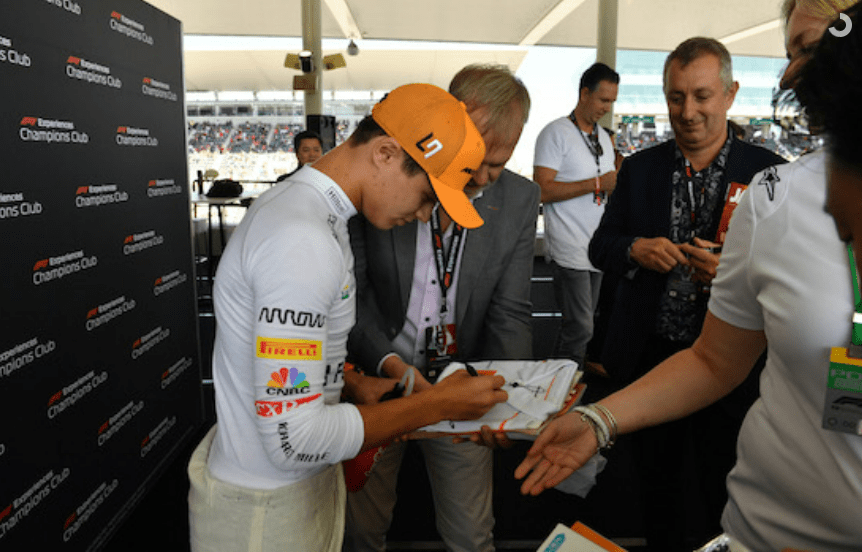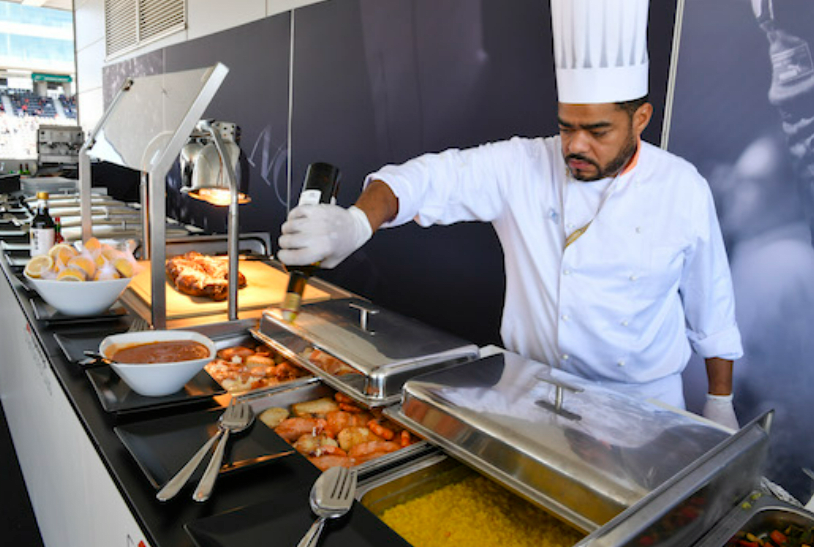With the return of the Japanese Grand Prix, we provide you with the details on the iconic Suzuka Circuit, as well as how you can get Japan Grand Prix hospitality tickets and what you get with them.
The Suzuka circuit returns to F1 fans hearts as the Japanese Grand Prix will be back on show for the first time since the 2019 season.
In honour of one of Formula 1’s most beloved races and tracks, we show you how you can be there with Japan Grand Prix hospitality and take you through the details and history of the Suzuka Circuit.
Enquire about Japan Grand Prix hospitalityJapan Grand Prix hospitality and tickets
As with every Formula 1 race, tickets for the Japanese Grand Prix at Suzuka Circuit have been and will always sell out quickly. It is one of the fan-favourite races, so demand is high every year.
If you want to guarantee your place at the race and are looking to experience it in the best possible way, why not check out the hospitality options we have to offer?


At Seat Unique, we offer premium hospitality packages and VIP tickets that will ensure that your time during any one of the F1 Grand Prix weekends will be filled with luxury and memories.
For the Japanese Grand Prix we are delighted to offer The Champions Club package.
Champions Club
With the Champions Club hospitality package at the Japanese Grand Prix, you will enjoy the best action from Saturday and Sunday, with access to a private hospitality suite overlooking the start/finish line and pit lane.
You will also be given a guided paddock tour and will receive a guest appearance from one of the drivers!
On top of this, you will enjoy delicious food throughout the day with a continental breakfast and gourmet lunch, as well as an open bar.
Enquire about Japan Grand Prix hospitalityReturn of the Suzuka Circuit
History of the Japanese Grand Prix
The Suzuka Circuit was opened in 1962, but the first Japanese Grand Prix at the Suzuka circuit wasn’t until 1987.
The first F1 Japanese Grand Prix was in 1976, but was held at the Fuji Speedway Circuit, Japan’s second FIA Grade 1 licensed circuit alongside Suzuka.
There were just two runnings of the Japanese Grand Prix at Fuji in 1976 and 1977, then Japan disappeared from the F1 calendar for 10 years until returning for the 1987 season at the Suzuka Circuit.
The race was then held at the circuit until 2007, when the Fuji circuit, now owned by Toyota, was instead chosen to be the location for future Japanese Grands Prix. Although, pushback from fans and drivers drove organisers to announce that the race would alternate between Fuji and Suzuka year by year.
However, Fuji only lasted another two years before stating it wasn’t financially viable for them to continue hosting the race, and the duties were once again given back to the Suzuka circuit.
The Suzuka Circuit iconic "Figure Eight" layout
Suzuka Circuit is loved by everyone. Every driver who has ever driven it has described their enjoyment of going round the historic track.
Every fan looks forward to the race each year because it is a fast and exciting track that has provided a lot of entertainment and thrills in the past, including the controversial conclusions to the 1989 and 1990 championships, that both involved Ayrton Senna and Alain Prost.
By far the best feature of the Suzuka Circuit is the “figure eight” layout, which has a long back straight that runs over the front section, just after turn nine, by means of an overpass.
This makes it just one of two FIA Grade 1 licensed tracks to feature a “figure eight” layout, with the other being the Fiorano Circuit in Fiorano Modenese, Italy - Ferrari’s private racetrack that they use for development and testing of all their production cars, as well as their F1 cars.
The track layout has been modified eight times in its history, but it is still largely the same as when it first opened in 1962. It has now gone unchanged since 2005.
Past Japanese Grand Prix results
The Japanese Grands Prix place on the F1 calendar is usually towards the end of the season, and on occasions it has acted as the final race of the year.
As such, this race heightens excitement if the title isn’t already decided, as a good result for certain drivers could change the dynamic of the championship.
The 1989 and 1990 championships were decided at this race, with Ayrton Senna and Alain Prost both being on the good and bad end in each year.
In 1989, championship leader Prost collided with his McLaren teammate and title rival Senna on lap 47, taking himself out. Senna carried on and won the race, but was disqualified after the race for getting marshals to help him restart his car when he was taken out, meaning Prost won the title.
The first incident was the culmination of two years of bad blood between the two legendary drivers. Prost came out on top the first year, but the very next year at this same circuit, it happened again.
In 1990, the script was flipped. Senna was the one in charge of the championship, while Prost, now driving for Ferrari, was closely behind.
Both started on the front row of the grid, with Senna on pole. Prost got the better start and got ahead, but going into the first corner, Senna attempted to take the inside of the first corner, subsequently taking himself and Prost out. This meant that this time, he was the champion.
Japanese Grand Prix 2022 Dates
The drivers will take to the Suzuka Circuit for the Japanese Grand Prix on Friday 7th October, with the race as usual on the Sunday, 9th October.
Enquire now about the hospitality packages for the Japanese Grand Prix now with Seat Unique.
We offer official hospitality packages and VIP tickets on our website, so you can always buy your tickets in confidence, knowing that your place for the race is secure.
Enquire about Japan Grand Prix hospitalityHead to the Formula 1 hospitality page on the Seat Unique website to check out the packages we have available for all the races remaining this season and for the 2023 F1 season.

Comments